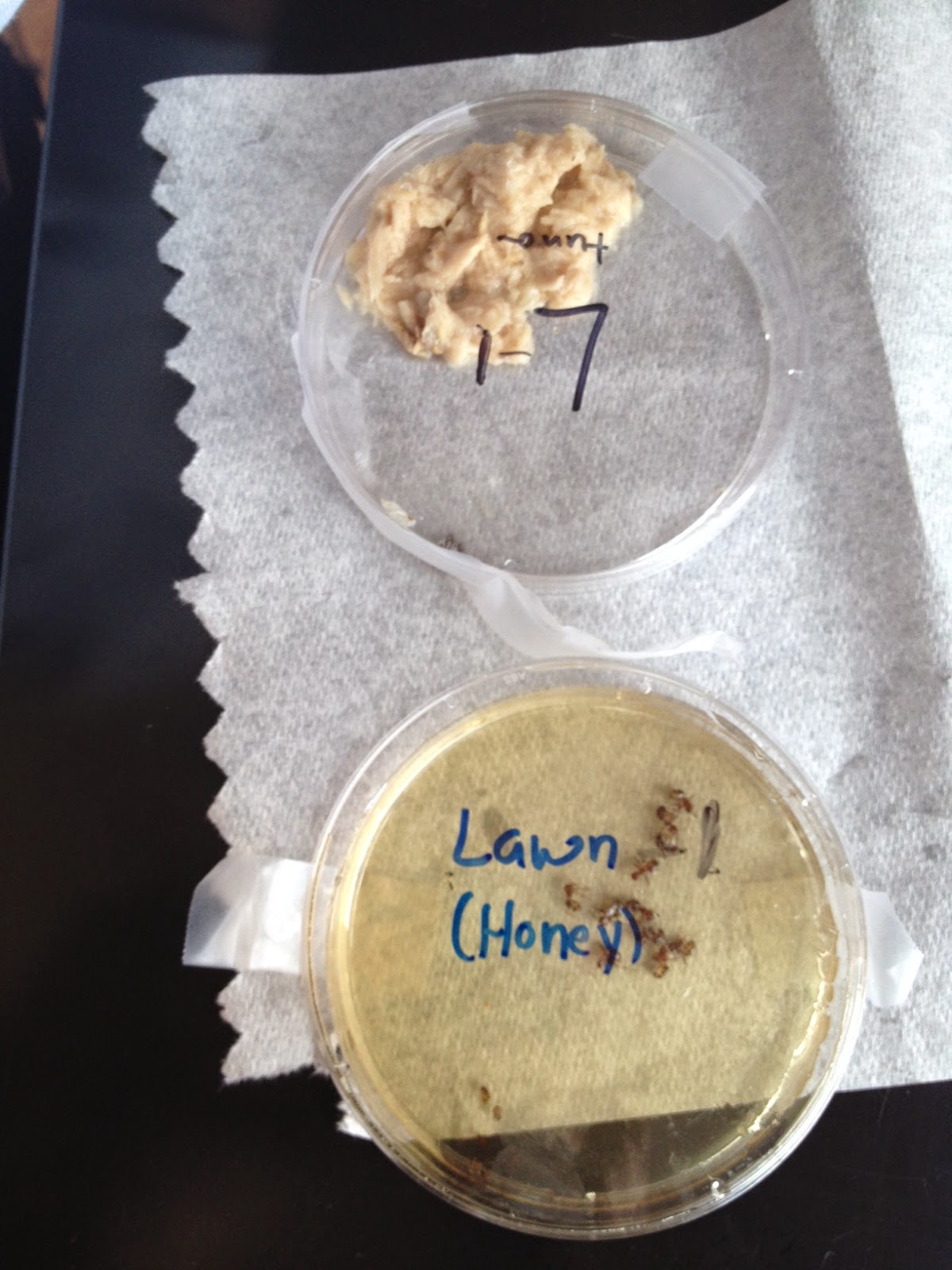Early in the year and when the weather is still more summer than fall, the students in Dick Ohern's AP Environmental Science class heads to the wetlands. In a lab called, "The Impact of Human Disturbance on
Biodiversity" students set baits (oily tuna and honey as
some ants like fats and some like sugars) in
different environments on campus. Ohern reports, "We then collect them perform ing calculations that give us measures of relative
biodiversity in the groupings of ants collected. We sample in the woods
near to the creek, in the tall grasses of the preserve,
on a piece of lawn (this year in the Academic Courtyard), and on the
stadium turf. Prior to doing the activity, the kids have to hypothesize
about the relationship between human disturbance and biodiversity, and
the data they collect allows them to then reflect
on that hypothesis after the data is analyzed." He continued, "This lab makes use of environments on campus that the kids can
relate to. They understand that the woods and the preserve are
relatively more natural areas than the lawn and the totally artificial
stadium turf. The preserve is interesting in that it
is newly "constructed" and we don’t yet see many ants there, though the
kids ( and I) think we ought to. My guess is the poor, clay soils there are hindering colonization by ants, but of course it may be
more complicated than that." Students love being able to use the campus outdoors spaces as extensions of their science labs.
In APES, as in other science classes, a good number of the lab activities happen outdoors, mimicking on a small
scale what real ecologists work.












No comments:
Post a Comment